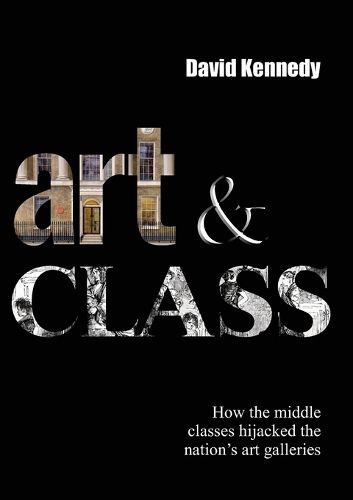Readings Newsletter
Become a Readings Member to make your shopping experience even easier.
Sign in or sign up for free!
You’re not far away from qualifying for FREE standard shipping within Australia
You’ve qualified for FREE standard shipping within Australia
The cart is loading…






This title is printed to order. This book may have been self-published. If so, we cannot guarantee the quality of the content. In the main most books will have gone through the editing process however some may not. We therefore suggest that you be aware of this before ordering this book. If in doubt check either the author or publisher’s details as we are unable to accept any returns unless they are faulty. Please contact us if you have any questions.
On a bright autumn day in 1857, the workers from Salts Mill in Yorkshire were waiting for special trains to take them on a day trip. But they were not going to Blackpool: they were going to The Manchester Art Exhibition which attracted 1.3 million visitors in less than six months the majority of whom were mill hands, factory workers and domestic servants.
Today less than 8% of visitors to our great galleries are from the working class. When and why did the working classes stop visiting art galleries and why does this matter?
Art & Class describes the advent of public art in the 18th Century, the development of national galleries in London and the explosion of regional galleries, all of which were crowded with working-class visitors.
All this came to a halt in 1946 when Keynes and the Bloomsbury Group seized control of the art world by establishing the Arts Council, slashing the countrywide Art for the People budget and pouring money into opera and ballet.
The same metropolitan elite, who established the Arts Council in 1946, still dominate our national galleries. Despite free opening, a range of charging and taxation policies mean that the working classes are not only being denied access to cultural capital but are subsidising the middle classes.
Art is a key aspect of cultural capital which middle-class children absorb through visits to galleries and concerts, but which are beyond the reach of working-class parents. This precious commodity opens the door to the elite universities and then on to high-paying jobs but working-class graduates entering the elite professions earn 16% less than their middle-class peers.
If the boards of today's galleries were more diverse and had inclusive charging and curatorial policies then, as in the Victorian era, they would attract visitors from all classes.
$9.00 standard shipping within Australia
FREE standard shipping within Australia for orders over $100.00
Express & International shipping calculated at checkout
This title is printed to order. This book may have been self-published. If so, we cannot guarantee the quality of the content. In the main most books will have gone through the editing process however some may not. We therefore suggest that you be aware of this before ordering this book. If in doubt check either the author or publisher’s details as we are unable to accept any returns unless they are faulty. Please contact us if you have any questions.
On a bright autumn day in 1857, the workers from Salts Mill in Yorkshire were waiting for special trains to take them on a day trip. But they were not going to Blackpool: they were going to The Manchester Art Exhibition which attracted 1.3 million visitors in less than six months the majority of whom were mill hands, factory workers and domestic servants.
Today less than 8% of visitors to our great galleries are from the working class. When and why did the working classes stop visiting art galleries and why does this matter?
Art & Class describes the advent of public art in the 18th Century, the development of national galleries in London and the explosion of regional galleries, all of which were crowded with working-class visitors.
All this came to a halt in 1946 when Keynes and the Bloomsbury Group seized control of the art world by establishing the Arts Council, slashing the countrywide Art for the People budget and pouring money into opera and ballet.
The same metropolitan elite, who established the Arts Council in 1946, still dominate our national galleries. Despite free opening, a range of charging and taxation policies mean that the working classes are not only being denied access to cultural capital but are subsidising the middle classes.
Art is a key aspect of cultural capital which middle-class children absorb through visits to galleries and concerts, but which are beyond the reach of working-class parents. This precious commodity opens the door to the elite universities and then on to high-paying jobs but working-class graduates entering the elite professions earn 16% less than their middle-class peers.
If the boards of today's galleries were more diverse and had inclusive charging and curatorial policies then, as in the Victorian era, they would attract visitors from all classes.